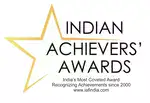Discussing the Utility of Video-based and Text-based Focus Groups
Technology has had a major impact on how qualitative market research is performed. With the right kind of qualitative data research technology, market research firms can now gather valuable data faster and more thoroughly than ever. Naturally, the introduction of cutting-edge technology has transformed the way certain descriptive qualitative research methods, like focus groups, are practiced. Today, focus groups are mostly conducted in an online setting. With both video-based and text-based focus group approaches quickly gaining wide popularity, it is easy for organizations to fall into the trap of indecisiveness. In this blog, we will discuss the ins and outs of video-based and text-based focus groups to help you determine which one is best for you. Let’s get started.
Key Differences of Video-based and Text-based Focus Groups
To learn the key differences between video-based and text-based focus groups, we are going to divide our study into four segments and scrutinize the differences in approach between the two.
Seamlessness
Video-based focus groups: Given their streaming and recording nature, video-based focus groups heavily rely on fast internet connections to prevent technical issues. Lack of adequate technical assistance and bad connectivity can cause disruptions in discussion sessions. Consequently, respondents might not be able to communicate properly and the quality of their responses might deteriorate.
Text-based focus groups: Text-based conversations consume a lot less data than webcam calls, making them simpler to manage. All participants need to do is simply type in their responses. It’s that simple!
Communication
Video-based focus groups: A video-based focus group is the closest substitute for an in-person conversation. Such focus groups, as opposed to text-based groups, can help researchers record minute details like body language and facial emotions. This makes it possible for moderators to pick up on any unspoken feelings or challenges that participants may be experiencing.
Text-based focus groups: Text responses could potentially provide less information than videos. This is because you won't be able to see the non-verbal signs that respondents exhibit during the interview session. This can result in one-dimensional feedback that is often insufficient for gathering qualitative data. To mitigate this issue, researchers can request respondents to add emoticons or emojis to their answers as an additional way of expressing their feelings.
Privacy
Video-based focus groups: Video-based focus groups involve some identity exposure because of the on-cam nature, which some participants might find uncomfortable. Not everyone is willing to respond to personal or social issues on camera, much like some people are reluctant to express their emotions in a room full of strangers.
Text-based focus groups: The fundamental benefit of text-based focus groups is that the participants can express their ideas and sentiments without being identified. This approach can encourage respondents to share their thoughts openly, leading to more frank and open interactions as compared to video-based focus groups.
Equipment
Video-based focus groups: Researchers must make sure that every participant has access to a webcam in addition to a steady internet connection. Once that’s sorted, participants can even join the focus group using their mobile devices.
Text-based focus groups: Participants generally don’t face any trouble attending a text-based focus group because they can access it from their devices, even with a slow internet connection. The entry barrier for text-based focus groups is next to zero.
Which Method to Choose?
Now that we know the differences between video-based and text-based focus groups, it’s crucial to determine the method to choose for your research program. Here are the factors you should consider in determining which online focus group technique is ideal for you:
The conversation subject
Remember, most people don't feel comfortable talking about sensitive subjects with strangers. As a result, if your conversation subject involves sensitive material, such as mental health, politics, or religion, some participants might be reluctant to speak up in a video-based focus group.
The participants' demographics
Next, you need to determine the average age group of your interview participants. Figure out if they are technologically knowledgeable and adept at using recording devices (such as a camera, speaker, and microphones). The younger, more tech-savvy audience is most suitable for video-based focus groups, while older generations may prefer text-based focus groups as they require less technological expertise.
Your research's goals
Now comes the main factor. Here, you need to ask yourself the following questions:
- Am I evaluating a product?
- Does the project call for participant observation?
If you want to get UX insights by watching how customers use a product, video-based focus groups are generally superior to text-based dialogues.
Final word
Depending on the factors that we discussed, both video-based and text-based focus groups can be beneficial to understand customer sentiments and detect market demographics. The key here is to know which method works when, and for that, it always helps to have a reliable descriptive qualitative research partner on your side. When looking for descriptive qualitative research, you need a company that offers scientifically proven quantitative and qualitative market research services. Unimrkt Research is one of the leading global agencies that conduct market research in India as well as other countries, across different industries, and in a variety of languages. To learn about our market research consulting services, call +91-124-424-5210, email sales@unimrkt.com or fill out our contact form.
Quick Enquiry
Customer Service, We Make it Better
Recent Posts
- How to Clarify and Align Your Research Goals for Maximum Impact
- Mining Valuable Data: The Driving Force for an Effective Growth Marketing Strategy
- Speaking the Customers Language: 7 Tips for Meaningful Qualitative Research
- Creating Value for Investors: The Benefits of Primary Market Research
- Utilizing Closed-Ended Questions For Quantitative Market Research
- Capturing the Changing Interests of Millennials Through Qualitative Research
- Refining Unit Economics with Robust Quantitative Market Research
- A Concise Guide to Quantitative Market Research
- 3 B2B Market Research Trends That Could Shape 2024
- Eyes on 2024: Changes That Might Disrupt the Healthcare Industry This Year
- Cracking the Language to Make Survey Questions Inclusive in 2024
- Attracting Investors: How Market Research Can Solidify Your Case
- Solid Foundations: Ways to Enhance Trustworthiness in Qualitative Research
- What Makes CATI Research So Effective?
- Moderator Qualities That Improve Qualitative Market Research
- 5 Consumer Market Trends That Will Define 2024
- What are the strengths of quantitative research?
- How to Make Your Partnership with Primary Market Research Firms Fruitful
- A Quick Guide to Harnessing the Strengths of Quantitative Research
- Advice from Your Research Partner: Don't Compromise Quality on Online Surveys













